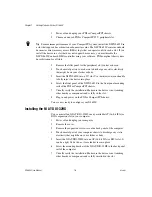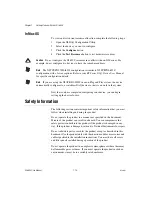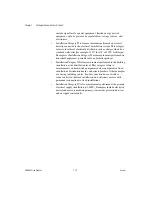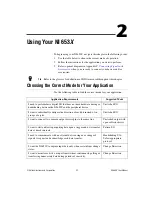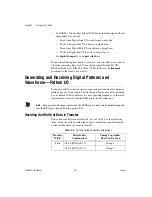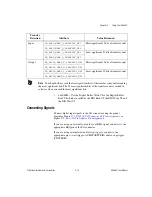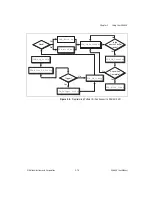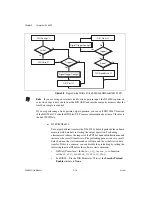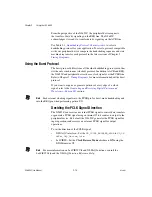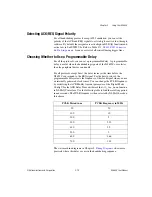
Chapter 2
Using Your NI 653X
©
National Instruments Corporation
2-7
Deciding Transfer Direction
You can choose to send data from your NI 653
X
to the peripheral device
(output) or from the peripheral device to your NI 653
X
(input).
Choosing an Internal or External REQ Source
In pattern I/O, the NI 653
X
acquires/generates data on every falling or
rising edge (programmable) of the REQ signal. The REQ signal can be
generated internally or based on the clock of a peripheral device. An
example of using external REQ is sharing a sample clock of an analog input
device so you can synchronize the analog and digital operations.
Reversing the REQ Polarity
By default, data from an external REQ source is transferred on the rising
edge of the signal and on the falling edge of the internal REQ source. You
can reverse the REQ polarity by using the following functions:
•
NI-DAQ C interface—Specify the REQ polarity in
DIG_Group_Mode
before calling
DIG_Block_PG_Config
.
•
LabVIEW—Specify the REQ polarity with the
request polarity
parameter in the Digital Mode Config VI, which is called by
DIO Config VI.
Note
For more information on LabVIEW VIs and NI-DAQ functions, consult the
LabVIEW Help
and the
NI-DAQ Function Reference Help
.
NI 653X I/O Connector 68-Pin Assignments
, for an
overview of all control/timing trigger lines.
16 bits
Port 0, Port 1
Group 1
Port 2, Port 3
Group 2
32 bits
Port 0, Port 1, Port 2, Port 3
Group 1
Table 2-2.
Port and Timing Controller Combinations (Continued)
Transfer
Width
Possible Port
Combinations
Timing Controllers
That Can Be Used
Содержание NI 653 Series
Страница 1: ...PCI 6533...




